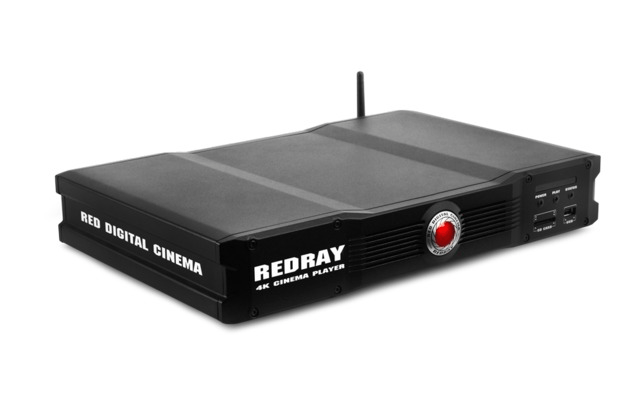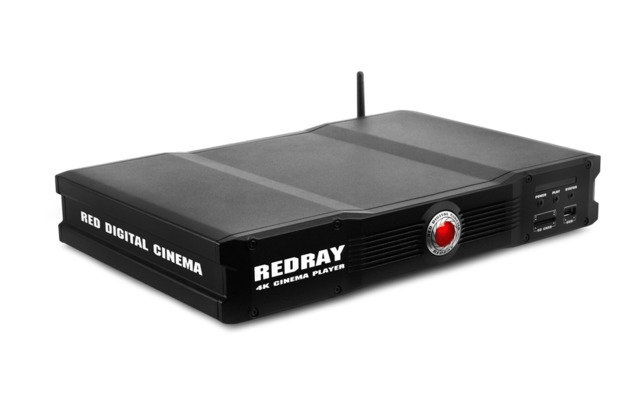
Digital Cinema’s RED Debuts Player With Digital Signage, Among Other Things, In Mind
December 5, 2012 by Dave Haynes
As a mere mortal who only kinda-sorta-mostly understands what geeks tell me in person and in writing, I am not quite sure what to make of the digital camera company RED saying it has a product for digital signage.
On the one hand, the idea of RED have a very high-rez 4K digital cinema media player is intriguing.
On the other hand, I know companies like YCD Multimedia have been doing 4K for about three years, and think a properly kitted desktop can push out that kind of big, crisp visual to a vido wall or monster flat panel.
RedShark, which covers all things RED, is reporting that one of the markets for the company’s new REDRAY player is digital signage. RED describes the $1,450 MSRP product this way:
The REDRAY PLAYER is the first plug-and-play friendly device capable of providing 4K content to 4K displays. REDRAY features the ability to play 4K files as well as upscale HD files to Ultra High-Definition resolution (4096×2160).
REDRAY connects to 4K displays using 1x 1.4 HDMI output or 4x HDMI 1.3 outputs, with an additional HDMI output for 7.1 channel audio (for HD displays, REDRAY uses 1x HDMI 1.3 output). REDRAY also supports 3D playback at high frame rates (48-60fps) — more than twice that of traditional HD plug-and-play 3D devices.
In a press release, the box is pitched this way:
With the recent launch of 4K resolution displays and projectors into the Consumer Electronics market, REDRAY fills a crucial role as an OTT network based appliance, and is the first media source capable of providing true 4K content to these displays.
REDRAY’s debut will come as no surprise to those who have followed RED closely, yet the specs and capabilities of REDRAY are sure to generate excitement from cinema purists and consumers alike. Future-proof resolution and wide dynamic range and have contributed to the rapid growth of 4K imaging for cinema and advertising.
Along with playing 4K .RED files, REDRAY features the ability to play back and upscale H.264 based HD files to Ultra HD resolution (3840×2160). Compared to existing distribution methods such as Blu-ray, which are limited to 8-bit, 4:2:0 color precision, REDRAY supports up to 12-bit 4:2:2 color precision to eliminate image artifacts and deliver a truly cinematic visual experience.
Equally impressive as the output fidelity is REDRAY’s exceptionally low 4K data rate averaging less than 2.5MB/s, which means a .RED file can deliver a feature-length film at full 4K resolution on a USB flash drive or via an OTT media network. With 1TB of internal storage, REDRAY supports up to 100 hours of 4K content.
REDRAY 4K media is protected against piracy by REDCrypt file encryption and supports optional ODEMAX™ digital rights management.
REDRAY connects to your HD or 4K TV/Projector via a single HDMI 1.4 cable, or four HDMI 1.3 cables, plus a dedicated HDMI output for 7.1 channel 24-bit 48KHz surround sound audio. [highlight color=”yellow”]For those interested in digital signage, a single REDRAY can simultaneously drive up to four HD panels or two 4K displays creating an immersive advertising opportunity for those looking to expand their branding.[/highlight]
REDRAY is the only 4K 3D playback system to support high frame rate playback (4K 3D at 48 or 60fps), allowing viewers the opportunity to experience the very latest technical developments in 3D filmmaking. Using the included IR remote or the REDRAY iOS application (available from the Apple App Store), users can connect to REDRAY via wireless network to select and manage their 4K and HD content, stored on the internal 1TB capacity hard disk drive.
It looks very much like content has to be moved around on RED’s partner distribution platform and that files are delivered by FTP. Or you just use a thumb drive. So I don’t see this being used anytime soon on a network with any level of sophistication to its programming and scheduling. But for a big-ass video wall playing the same file over and over again, sure.




Leave a comment